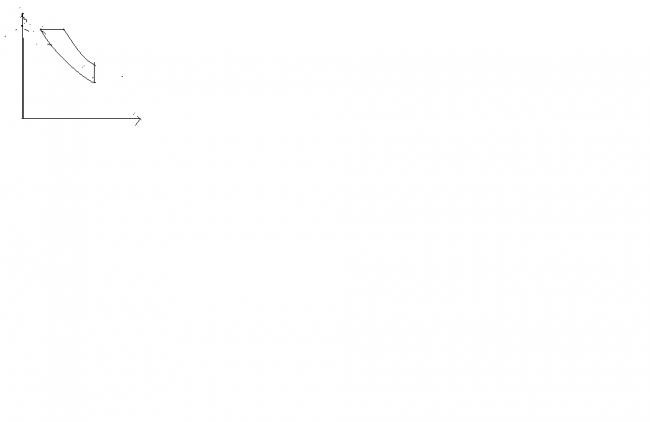@Avinav..
This is ur self made question?
coz the similar question that came in AITS yesterday ..in that the process BC and DA were Isothermal
C1=y2=4ax
C2:the curve obtained by rotating the C1 120° in anti-clokwise
direction
C3: refllection of c2 wrt y=x
S1 and s2 ,s3..are focus of the curves
Q1.find the parametric eqn of C2
Q2.area of ΔOS2S3
Q3. AREA BOUNDED BY CURVE C3 WRT X AXIS
-
UP 0 DOWN 0 0 21

21 Answers
GUYZ PLZ SPARE A BIT OF TIME TO ANS THE COLUMN MATCH....PLZ...PLZ

IN THIS P-V DIAGRAM
ABCD ARE THE PTS MARKD IN CLOCKWISE MANNER
WITH "A" BEIN THE PT CLOSEST TO Y -AXIS
BC AND DA =ADIABATIC
COL-1 : COL-2
A)IN AB P)ΔU>0
B)IN BC Q)ΔU<0
C)IN CD R)ΔQ=0
D)IN DA S)ΔQ>0
T)ΔQ<0
PLZ RPLY TO THIS Q ....AS LOT OF CONCEPTS ARE BASED ON THIS Q.....THIS WILL SURELY CLARIFY ALL OUR DBTS IN THERMODYNAMICS
6--> d as in para hydroxytoluene....the resonance is more w.r.t. toluene or phenol....therefore the net dipole is lesser than the sum!!!
Q7>WHAT IS THE ORDER OF THEIR (O-O)BOND LENGTH
H2O2 ,O2CL2 , O2F2
NIKUNJ AND TAPAS EXPLAIN UR ANSWERS
3..FALSE( PLZ GIV REASON)
4.FALSE( SHUDNT IT BE IP =4*10^-10)
5.FALSE ADDING FEW MORE
6.>DIPOLE MOMENT OF TOLUENE IS 'X' AN DTHAT OF PHENOL IS Y.WHAT IS THE RESULTANT DIPOLE MOMENT OF PARA HYDROXY TOLUENE .
a) X+Y
b)X-Y
c)Y
d)LESS THAN X+Y ..GREATER THAN Y
PLZ GIVE REASONS TO Q4 AND Q6
By rotating the focus by the given angles.....
S1= (a,0)
S2=(-a/2,√3a/2)
S3=(a/2, -√3a/2)
2.) S2, o and S3 are collinear, so Δ=0
No elec. here & Thats all the power my UPS can supply, so cant write much :(
plz verify me,am not very confident about the answers:
3)Mn changes from +7 to +2 oxidation state in acidic medium.
so 5 electrons accepted per mole.true
5)False(i think the speeds will be same for all,only frequency and wavelengths will vary)
Avinav for question 1,
Let us assume the equation of the circle is x2 + y2 = a2 since you have not given it.
Let the point P be (x1, y1) and Q be (h, k).
Our target is to find PQ = √(h - x1)2 + (k - y1)2. [Distance Formula]
We draw tangents from P to the circle such that their length is 3.
Since by putting a point in the equation of the circle, we obtain the square of the length of tangents drawn from it to the circle(provided point is outside), we get
x12 + y12 - a2 = 9 => 1st eq.
Now the chord of contact of tangents drawn from P is given by the eq
xx1 + yy1 - a2 = 0.
Since Q satisfies the chord of contact, we will get
hx1 + ky1 - a2 = 0 => 2nd eq.
Now tangents drawn from Q have length 4, which by putting Q in circle's equation we get
h2 + k2 - a2 = 16 => 3rd eq.
Now (PQ)2 = (h2 + k2) + (x12 + y12) - 2(hx1 + ky1)
= (16 + a2) + (9 + a2) - 2a2
= 25
Thus PQ = 5 units.
Rahul: good work...ans=8
ADDING MORE QS
T/F;
3.>1 mole of KMnO4 accepts 5 elctrons in acidic
medium during redox rxn.
4.>if equal volume of CaCl2 10-3 M soln and 10-7M Na2SO4 is mixed then IP is 10-10
5.>Highenergy gamma rays have higher velocity than lower ones
2. (-8-8√3i)1/4=(16)^{1/4}(cos4\pi /3+isin4\pi /3)^{1/4}=±2(cos\pi /3+isin\pi /3) similarly,(-8-8√3i)1/4=(16i^{4})^{1/4}(cos4\pi /3+isin4\pi /3)^{1/4}==±2i(cos\pi /3+isin\pi /3) so u get 4 roots 1)√3-i 2.-√3+i 3.1+√3i 4.-1-√3i
so area of square=8
@ GRANDMASTER..RIGHT
INTEGER TYPE
1>THE CHORD OF CONTACT OF TANGENTS FROM A PT "P"TO A CIRCLE PASSES THRU Q...IF 3 AND 4 ARFE THE LENGHTS OF TANGENTS TO THE CIRCLE THEN LENGTH OF PQ IS .........
2.>AREA OF THE SQUARE FORMED BY THE ROOTS OF (-8-8√3i)1/4 IS.....
if can just calculate the line joining s2 and s3 is
x+y=-a/2 + √3a/2
so now we can compute the area (finding the length of the line segment S2S3 and the length of the distance of the point of intersection of the line S1S2 from origin.....then its just Area= 1/2 (perpendicular) )....should get it equal to a2/4....confirm!!!!